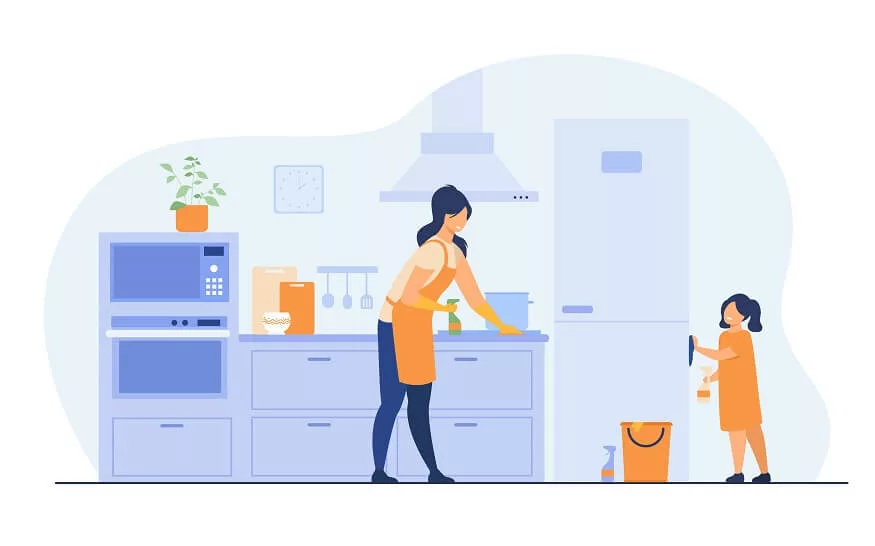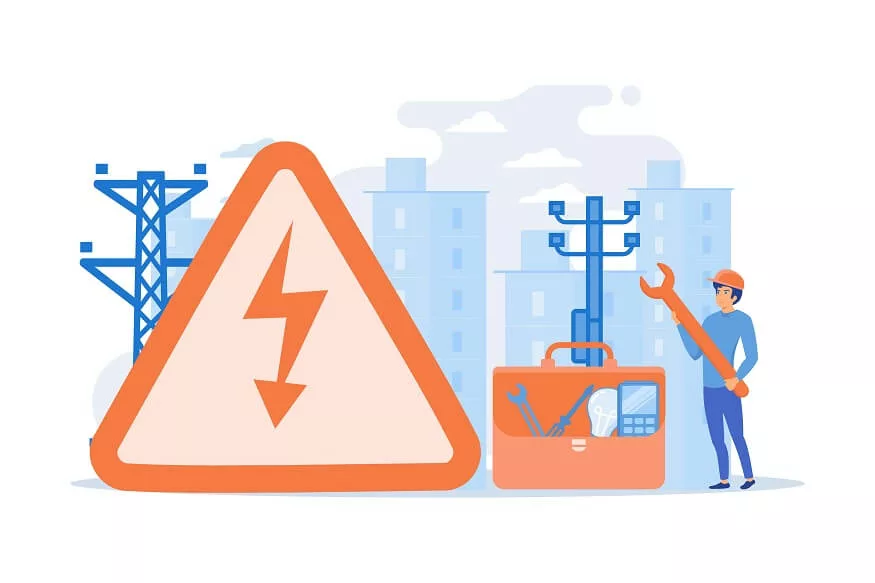Cooking is an important and enjoyable place in our everyday lives, but it can also have chances of injury and mistakes, particularly cuts and burns. To have a safe and enjoyable cooking experience, it is important to avoid these common kitchen mistakes. In this blog, we will learn about some kitchen safety tips.
Kitchen Safety Tips:
1. Understanding the Risks
Before we delve into specific safety measures, it’s essential to understand why burns and cuts are prevalent in the kitchen. Here are some common reasons:
High Temperatures: Cooking often involves hot surfaces, oils, and open flames, all of which can cause burns if not handled carefully.
Sharp Tools: Knives, graters, and other sharp utensils are essential in the kitchen, but they can also be hazardous if not used with caution.
Inattention: Distractions, multitasking, or simply not paying attention can lead to accidents in the kitchen.
Inexperience: Lack of knowledge about kitchen equipment and techniques can increase the risk of accidents.
2. Wearing Appropriate Clothing
Start with the basics: dressing appropriately for the kitchen. Avoid loose-fitting clothes that could catch fire, and opt for short or rolled-up sleeves to prevent accidental sleeve-to-flame contact. An apron can provide an extra layer of protection.
3. Stay Organized
A cluttered kitchen is a recipe for accidents. Keep your workspace organised, with utensils, ingredients, and tools within easy reach. When you need to move quickly or reach for something, a well-organised kitchen reduces the risk of accidentally knocking over hot pots or sharp objects.
4. Use the Right Tools
Make sure you have the right tools for the job. Using the wrong knife for slicing or a flimsy pot holder can lead to accidents. Invest in quality kitchen equipment and utensils, and make sure your knives are sharp. Dull knives require more force to cut, increasing the risk of slipping and cutting yourself.
5. Safe Knife Handling
Using knives is fundamental in cooking but can also be hazardous. Here are some knife safety tips:
Keep your knives sharp: Sharp knives are safer than blunt ones because they require less power and are unable to slide.
Cut away from your body: Always cut away from your body while slicing to reduce the chance of cutting yourself.
Use a cutting board: Cut away from counters and other hard surfaces, which might dull your knife and cause it to slip.
Hold the knife properly: Learn the proper grip for your knife to have better control.
6. Burn Prevention Tips:
Burns are a common kitchen injury, often caused by hot surfaces and liquids. Follow these guidelines to prevent burns in the kitchen.
Use oven mitts or potholders: The first step to the prevention of burns is to always use proper hand protection when handling hot pots, pans, or oven trays.
Turn pot handles inward: When cooking on the stovetop, turn the pot and pan handles toward the centre of the stove to prevent accidental collisions or spills.
Be cautious with steam: One of the important burn prevention tips is, when opening lids or checking on simmering dishes, open them away from your face to avoid steam burns to prevent burns in the kitchen.
Avoid overcrowding the stovetop: Crowded cooking surfaces can lead to accidents. Maintain a clean cooking area.
Use a timer: Set a timer to remind yourself of cooking times to prevent burns and overcooking.
7. Grease and Oil Safety
Hot oil and grease can cause severe burns and fires. Follow these tips to stay safe when working with oil and grease:
Use a deep-fry thermometer: When frying, maintain the correct oil temperature to avoid splatters and overheating.
Do not overfill the pot: When frying or deep frying, only fill the pot or pan with oil to the recommended level to prevent spills.
Add food carefully: Lower food into hot oil gently to prevent splashing.
Have a fire extinguisher ready: In case of a grease fire, keep a kitchen-appropriate fire extinguisher nearby and know how to use it.
Also Read: How can children help their parents in the kitchen?
8. Microwave Safety
Microwaves are convenient but can also cause burns if not used carefully:
Use microwave-safe containers: Ensure that the dishes and containers you use in the microwave are labelled as microwave-safe.
Open containers carefully: When heating foods in the microwave, open containers with caution to avoid steam burns.
Stir and check the temperature: Stir food well and check its temperature before consuming it to prevent hot spots and preventing burns in the kitchen.
9. Be Mindful of Children and Pets
If you have children or pets in your household, it’s essential to be extra vigilant. Keep hot dishes and sharp objects out of their reach. Teach them about kitchen safety, including the dangers of the stove, knives, and hot surfaces.
10. First Aid Preparedness
Despite taking precautions, accidents can still happen. Be prepared by having a well-stocked first aid kit in your kitchen. In case of minor burns or cuts, immediate treatment can prevent further complications. Your first aid kit should include bandages, burn cream, antiseptic wipes, and other essential items.
11. Emergency Response
In case of severe burns or cuts, it’s vital to know how to respond effectively:
Prevention of Burns: Seek medical assistance right away if you have severe burns. Run cold water over the damaged area to calm it down, then apply burn cream and wrap it with a clean, nonstick bandage.
Cuts: For deep or heavily bleeding cuts, apply pressure with a clean cloth or bandage and seek medical help. For minor cuts, clean the wound thoroughly with soap and water, apply an antiseptic, and use a sterile bandage.
12. Fire Safety
Remember these important precautions in the case of a kitchen fire:
Water may cause a grease fire to light up, so never use it on one. To smother the flames, use a kitchen fire detector or cover the pan with a lid.
Escape the area: Call 911 and move from your home if the fire is out of control. Create a fire escape plan and ensure that everyone in your home knows about it.
Also Read: Fire Safety Tips for Kids
13. Training and Education
To improve your kitchen safety knowledge, consider taking a culinary safety class or course. Learning correct skills, handling equipment, and first aid can help prevent accidents.
14. Maintenance and Inspection
Regularly inspect your kitchen equipment and appliances. Look for frayed cords, loose handles, or any other issues that could lead to accidents. Replace or repair damaged items promptly.
15. Practice Safe Food Handling
Foodborne illnesses can also pose a risk in the kitchen. Ensure proper food safety measures, such as washing your hands before handling food, cooking meat to the correct temperature, and avoiding cross-contamination.
16. Limit Distractions
Avoid multitasking in the kitchen, as distractions can lead to accidents. Focus on the task at hand, and when needed, take short breaks to check on other things outside the kitchen.
17. Maintain Good Lighting
A well-lighted kitchen is a safer kitchen. Proper lighting can help you see what you’re doing and avoid accidents.
18. Know Your Limits
If you’re not familiar with a particular cooking technique or equipment, don’t hesitate to ask for help or seek guidance from a more experienced cook. Trying to use unfamiliar tools or methods can lead to accidents.
19. Stay Sober
Cooking while under the influence of alcohol or drugs can affect your judgment and cooperation, increasing your chances of an accident. If you are not in a suitable mode of mind, avoid cooking.
20. Respect Hot Surfaces
Be mindful of hot surfaces, even after you’ve finished cooking. Don’t touch or place objects on surfaces that have been recently used for cooking. Let them cool down first.
Also Read: Electrical safety for kids: The dangers of sockets and appliances
At EuroSchool, we understand the significance of kitchen safety tips. Prevention of burns and cuts in the kitchen requires awareness, preparation, and careful attention to detail. If you are following these safety tips, you can enjoy cooking without distraction. Whether you are a chef, these tips will help you and your loved ones safe as you create tasty food. Remember that awareness and attentiveness are the keys to safe cooking.










